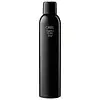What's inside
What's inside
 Key Ingredients
Key Ingredients

No key ingredients
 Benefits
Benefits

 Concerns
Concerns

 Ingredients Side-by-side
Ingredients Side-by-side

Sd Alcohol 40-B
AstringentDimethyl Ether
SolventOctylacrylamide/Acrylates/Butylaminoethyl Methacrylate Copolymer
Aminomethyl Propanol
BufferingParfum
MaskingGlycerin
HumectantAcetyl Triethyl Citrate
MaskingPEG/PPG-17/18 Dimethicone
EmulsifyingWater
Skin ConditioningPanthenol
Skin ConditioningAmp-Isostearoyl Hydrolyzed Wheat Protein
CleansingBenzophenone-4
UV AbsorberCitrullus Lanatus Seed Oil
EmollientActinidia Chinensis Fruit Extract
EmollientAloe Barbadensis Leaf Extract
EmollientHedychium Coronarium Root Extract
MaskingMangifera Indica Fruit Extract
Skin ConditioningLitchi Chinensis Fruit Extract
Skin ConditioningPhenoxyethanol
PreservativeLeontopodium Alpinum Flower/Leaf Extract
Skin ConditioningStyrax Benzoin Resin Extract
MaskingCitric Acid
BufferingPotassium Sorbate
PreservativeSodium Benzoate
MaskingLimonene
PerfumingHexyl Cinnamal
PerfumingLinalool
PerfumingCitral
PerfumingSd Alcohol 40-B, Dimethyl Ether, Octylacrylamide/Acrylates/Butylaminoethyl Methacrylate Copolymer, Aminomethyl Propanol, Parfum, Glycerin, Acetyl Triethyl Citrate, PEG/PPG-17/18 Dimethicone, Water, Panthenol, Amp-Isostearoyl Hydrolyzed Wheat Protein, Benzophenone-4, Citrullus Lanatus Seed Oil, Actinidia Chinensis Fruit Extract, Aloe Barbadensis Leaf Extract, Hedychium Coronarium Root Extract, Mangifera Indica Fruit Extract, Litchi Chinensis Fruit Extract, Phenoxyethanol, Leontopodium Alpinum Flower/Leaf Extract, Styrax Benzoin Resin Extract, Citric Acid, Potassium Sorbate, Sodium Benzoate, Limonene, Hexyl Cinnamal, Linalool, Citral
Water
Skin ConditioningSodium C14-16 Olefin Sulfonate
CleansingCocamidopropyl Betaine
CleansingPEG/PPG-8/3 Diisostearate
EmulsifyingHydrogenated Jojoba Oil
AbrasiveAcrylates Copolymer
Vaccinium Myrtillus Fruit/Leaf Extract
AstringentSaccharum Officinarum Extract
MoisturisingCitrus Aurantium Dulcis Fruit Extract
MaskingCitrus Limon Fruit Extract
MaskingAcer Saccharum Extract
Skin ConditioningSalicylic Acid
MaskingGlycyrrhiza Glabra Root Extract
BleachingPanthenol
Skin ConditioningBisabolol
MaskingCitric Acid
BufferingGlycerin
HumectantEthylhexylglycerin
Skin ConditioningSodium Hydroxide
BufferingDisodium EDTA
Potassium Sorbate
PreservativePhenoxyethanol
PreservativeLavandula Angustifolia Oil
MaskingCitrus Aurantium Dulcis Peel Oil
MaskingMica
Cosmetic ColorantTin Oxide
AbrasiveTitanium Dioxide
Cosmetic ColorantWater, Sodium C14-16 Olefin Sulfonate, Cocamidopropyl Betaine, PEG/PPG-8/3 Diisostearate, Hydrogenated Jojoba Oil, Acrylates Copolymer, Vaccinium Myrtillus Fruit/Leaf Extract, Saccharum Officinarum Extract, Citrus Aurantium Dulcis Fruit Extract, Citrus Limon Fruit Extract, Acer Saccharum Extract, Salicylic Acid, Glycyrrhiza Glabra Root Extract, Panthenol, Bisabolol, Citric Acid, Glycerin, Ethylhexylglycerin, Sodium Hydroxide, Disodium EDTA, Potassium Sorbate, Phenoxyethanol, Lavandula Angustifolia Oil, Citrus Aurantium Dulcis Peel Oil, Mica, Tin Oxide, Titanium Dioxide
Ingredients Explained
These ingredients are found in both products.
Ingredients higher up in an ingredient list are typically present in a larger amount.
Citric Acid is an alpha hydroxy acid (AHA) naturally found in citrus fruits like oranges, lemons, and limes.
Like other AHAs, citric acid can exfoliate skin by breaking down the bonds that hold dead skin cells together. This helps reveal smoother and brighter skin underneath.
However, this exfoliating effect only happens at high concentrations (20%) which can be hard to find in cosmetic products.
Due to this, citric acid is usually included in small amounts as a pH adjuster. This helps keep products slightly more acidic and compatible with skin's natural pH.
In skincare formulas, citric acid can:
While it can provide some skin benefits, research shows lactic acid and glycolic acid are generally more effective and less irritating exfoliants.
Most citric acid used in skincare today is made by fermenting sugars (usually from molasses). This synthetic version is identical to the natural citrus form but easier to stabilize and use in formulations.
Read more about some other popular AHA's here:
Learn more about Citric AcidGlycerin is already naturally found in your skin. It helps moisturize and protect your skin.
A study from 2016 found glycerin to be more effective as a humectant than AHAs and hyaluronic acid.
As a humectant, it helps the skin stay hydrated by pulling moisture to your skin. The low molecular weight of glycerin allows it to pull moisture into the deeper layers of your skin.
Hydrated skin improves your skin barrier; Your skin barrier helps protect against irritants and bacteria.
Glycerin has also been found to have antimicrobial and antiviral properties. Due to these properties, glycerin is often used in wound and burn treatments.
In cosmetics, glycerin is usually derived from plants such as soybean or palm. However, it can also be sourced from animals, such as tallow or animal fat.
This ingredient is organic, colorless, odorless, and non-toxic.
Glycerin is the name for this ingredient in American English. British English uses Glycerol/Glycerine.
Learn more about GlycerinPanthenol is a common ingredient that helps hydrate and soothe the skin. It is found naturally in our skin and hair.
There are two forms of panthenol: D and L.
D-panthenol is also known as dexpanthenol. Most cosmetics use dexpanthenol or a mixture of D and L-panthenol.
Panthenol is famous due to its ability to go deeper into the skin's layers. Using this ingredient has numerous pros (and no cons):
Like hyaluronic acid, panthenol is a humectant. Humectants are able to bind and hold large amounts of water to keep skin hydrated.
This ingredient works well for wound healing. It works by increasing tissue in the wound and helps close open wounds.
Once oxidized, panthenol converts to pantothenic acid. Panthothenic acid is found in all living cells.
This ingredient is also referred to as pro-vitamin B5.
Learn more about PanthenolPhenoxyethanol is a preservative that has germicide, antimicrobial, and aromatic properties. Studies show that phenoxyethanol can prevent microbial growth. By itself, it has a scent that is similar to that of a rose.
It's often used in formulations along with Caprylyl Glycol to preserve the shelf life of products.
Potassium Sorbate is a preservative used to prevent yeast and mold in products. It is commonly found in both cosmetic and food products.
This ingredient comes from potassium salt derived from sorbic acid. Sorbic acid is a natural antibiotic and effective against fungus.
Both potassium sorbate and sorbic acid can be found in baked goods, cheeses, dried meats, dried fruit, ice cream, pickles, wine, yogurt, and more.
You'll often find this ingredient used with other preservatives.
Learn more about Potassium SorbateWater. It's the most common cosmetic ingredient of all. You'll usually see it at the top of ingredient lists, meaning that it makes up the largest part of the product.
So why is it so popular? Water most often acts as a solvent - this means that it helps dissolve other ingredients into the formulation.
You'll also recognize water as that liquid we all need to stay alive. If you see this, drink a glass of water. Stay hydrated!
Learn more about Water